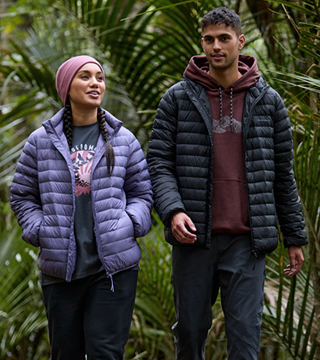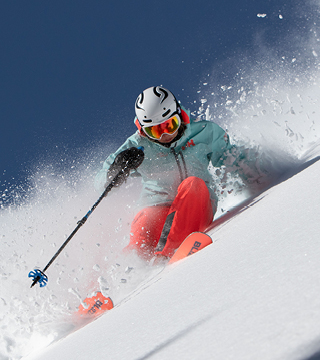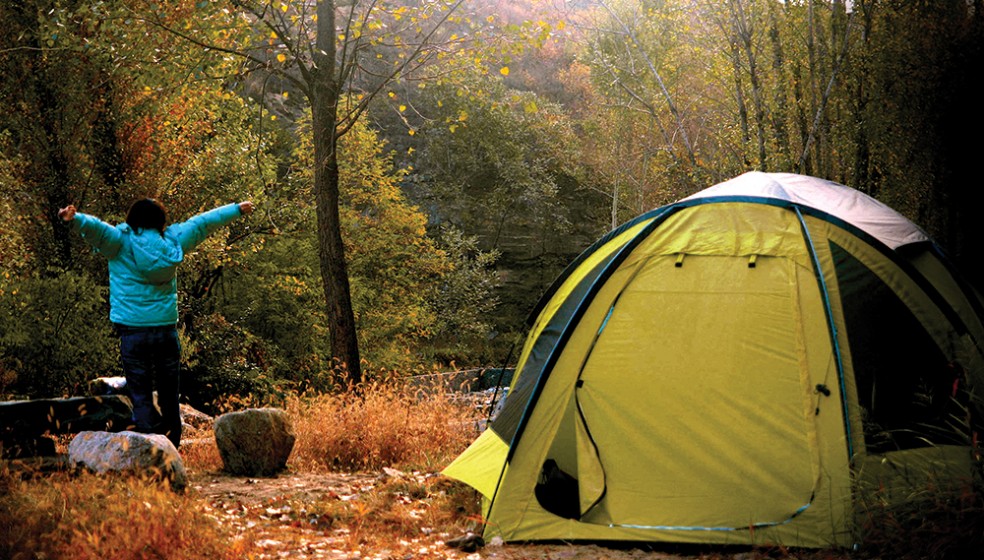How to Choose a Dome Tent
Dome Tents are the most popular tent option due to being relatively inexpensive, easy to put up and take down, and being of a lighter and smaller packed down size than canvas tents. Dome tents are designed for a vast range of uses and desired conditions and are ideal for those who do a mixture of overnight/weekend trips or those who do not stay in one place when on a camping holiday. Domes are versatile tents and can be used in a wide variety of terrains and weather conditions. However, each dome tent is uniquely designed to function in certain conditions. For that reason dome tents are available in a HUGE range of sizes and structural configurations to work correctly in the desired environment and context. Choosing the appropriate dome tent doesn’t need to be too difficult, but to narrow your search, we’ve created a handy list of guidelines to help you understand what to look for.
What do you want to use it for?
This is an extremely important question to ask as no single tent will suit all uses and conditions. Do you plan on using it for extended periods in summer at a camping ground? Do you want to use it while travelling around in a car or for use on weekend trips? Or do you want something light enough that you can carry in your pack while you walk to a camping spot? The next question is how big do you need the tent to be? There are obviously advantages and disadvantages to each size of tent. Large dome tents have more liveable space but are heavier, bulkier, and take up more room on both the campsite, and in the boot of the car. Conversely smaller dome tents offer the opposite advantages and disadvantages. If you have a family of 4 then you may need a multi room tent, but if it is for 1 person you could get away with a smaller option, the size of the tent should be relative to how much room you need to be comfortable on a camping trip.
In what conditions will the tent be pitched?
Not all tents are created equal in terms of strength and durability, therefore anticipating the environmental conditions the tent will come under is important to understand. Large tents are not designed for gale force winds in general, as bigger tent walls have a greater surface area against the wind, which in turn places added stress on the tent frame. With this in mind, most dome tents will stand up to strong winds in camping grounds if pitched correctly, but are not designed for alpine or wilderness conditions. If you are looking for a tent to use tramping or in alpine conditions please see our adventure tent category. Otherwise, any of our dome tents (or canvas tents) will be suitable for New Zealand’s camping grounds under normal weather conditions. However, we do suggest you avoid pitching a dome tent or canvas tent in violent weather conditions and gales; they are not designed to cope under such pressure.
What budget do you have?
There are a huge range of tents available out there and with that come a broad range of prices. In some respects you do get what you pay for, but under normal weather conditions all of our tents offer adequate shelter against the elements. The variations in pricing generally come down to a few factors. The bigger the tent, the higher the price that will normally be associated with it due to the amount of fabric, workmanship, and structural material needed to make it. The materials used in construction have an effect on price, with more weatherproof fabrics or stronger poles and materials costing more than basic materials, thus pushing up the overall price. Other than that, the variations in price mainly come down to the features within a tent that make the shelter more comfortable. Buying the most expensive tent won’t necessarily mean it is the right tent for you, you are always best to best to compare a range of options and select the tent that best suits your needs. If in doubt, please contact us in store, online, or on 0800 867 733.
Camping Ground Dome Tents
Camping is one of New Zealand’s favourite past times, and is synonymous with the kiwi summer. Whether it’s a bustling camping ground over Christmas or a relaxed DOC site in February, there’s no doubt you will find a dome tent pitched there. Camping ground dome tents are made for predominantly sheltered conditions and their main focus is around space and comfort. Size and weight is not often a huge issue as you can normally pull the car up to the camp site, but even still they are smaller and take up less room in the car than a canvas tent. Dome tents are relatively easy to erect and take down, and are a very affordable option compared with canvas.
Dome tents tend to include various features to improve comfort and allow for easy organisation inside. While camping ground dome tents are generally quite roomy, they also include features to make living more comfortable. Examples include roof or wall pockets for storage, anti-snag and glow in the dark zippers, power cord access, mesh venting systems, or roof loop cords for hanging lanterns. This style of dome is designed to make living in the campground or other sheltered outdoor environment easier, more comfortable and therefore enjoyable. The rooms are usually fairly large in size to fit an airbed or stretcher and the roof at a comfortable height for a person standing upright (larger dome tents only).
Campground domes most commonly come with fiberglass poles which are inexpensive to produce and easily replaceable. As you move up in dome tent size, tents tend to separate the inside with mesh walls (or room pods), or in some cases even include fully separated rooms. This allows for separate bedrooms and / or storage or food preparation areas (never cook with gas inside your tent for risk of carbon monoxide poisoning). As dome tents increase in size, the poles also increase in thickness to bear a larger weight and stress. Fiberglass poles can also come wrapped in a plastic film which increases their ability to bend without splintering or breaking. Tent poles are also available in lightweight aluminium which tends to be stronger than fibreglass. However, there are several grades of aluminium available, some of which are significantly stronger than others. Some manufactures produce tent poles in lightweight aluminium that are no stronger than fibreglass so be careful and only choose a quality product, it is not as simple as aluminium is better than fibreglass…
Dome Tent Materials
Dome Tent fly’s (outer weather proof shell) are usually made of nylon, polyester or a mixture of both. Polyesters are inexpensive to produce, do not absorb moisture and have high resistance to UV radiation. Nylons provide high tensile strength but also absorb moisture and are very susceptible to the chemical degradation caused by UV light. However, most fabrics are now coated with various Polyvinylchloride (PVC) or Silicone polymers which have made the two fabrics very similar in quality and performance. PU and Silicone coatings are far more common in today’s domes as although PVC is an excellent barrier to water vapour, it is heavy, and is particularly inflexible at low temperatures. Whether you chose a tent with a nylon or a polyester fly it doesn’t really matter too much (manufacturers often have both nylon and polyester tents in their range and/or vary which fabric type they use depending on new technologies, availability and pricing). In short, tent fabrics are continually under review. To make your life simple let the manufacturer worry about the type of the fabric and chose a reputable brand that has a good after sale service.
The floor fabrics of tents are generally made in heavier fabrics with additional waterproof coating to make them more durable and watertight. Heavier weight nylons and polyesters are typically used in combination with a PVC coating. Only in lightweight dome tents or adventure tents will you start PU or silicone bases polymer coatings as they are more expensive to produce and less durable.
HELPFUL HINTS
- Always follow the manufacturer’s instructions.
- If possible, try to pitch your tent with the rear of the tent facing the prevailing wind.
- If possible do not pitch your tent under trees. The dripping on your tent could keep you up at night and falling branches can damage your tent. Tree sap and bird droppings will cause irreparable damage to your tent.
- Always ensure that the fly is velcroed onto the frame (if this is part of the design), that way when all the guy ropes are pegged out, they will hold the frame of the tent in place. It also ensures that the guy ropes pull on the frame, not just the fly.
- Always peg out the guy ropes, it helps stabilise the tent, places any pressure on the correct aspects of the frame and can prevent damage in strong wind.
- Hit your pegs in at a 45 degree angle.
- Always pack away and store your tent completely dry – rain or condensation will rot your tent if it is packed away damp.
- Do not leave your tent pitched unnecessarily. UV light shortens the life of your tent.
- Leave windows open during the day to make for a cooler tent.
- When pushing the poles out of the pole sleeves, bend them slightly. This will keep the poles connected together. Pushing the poles in and out of the sleeves is easier and better for your tent.


















